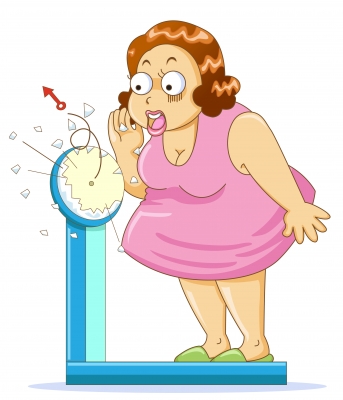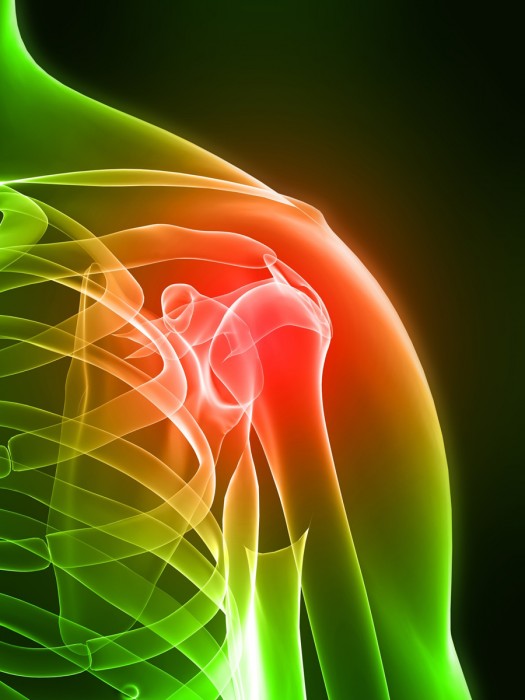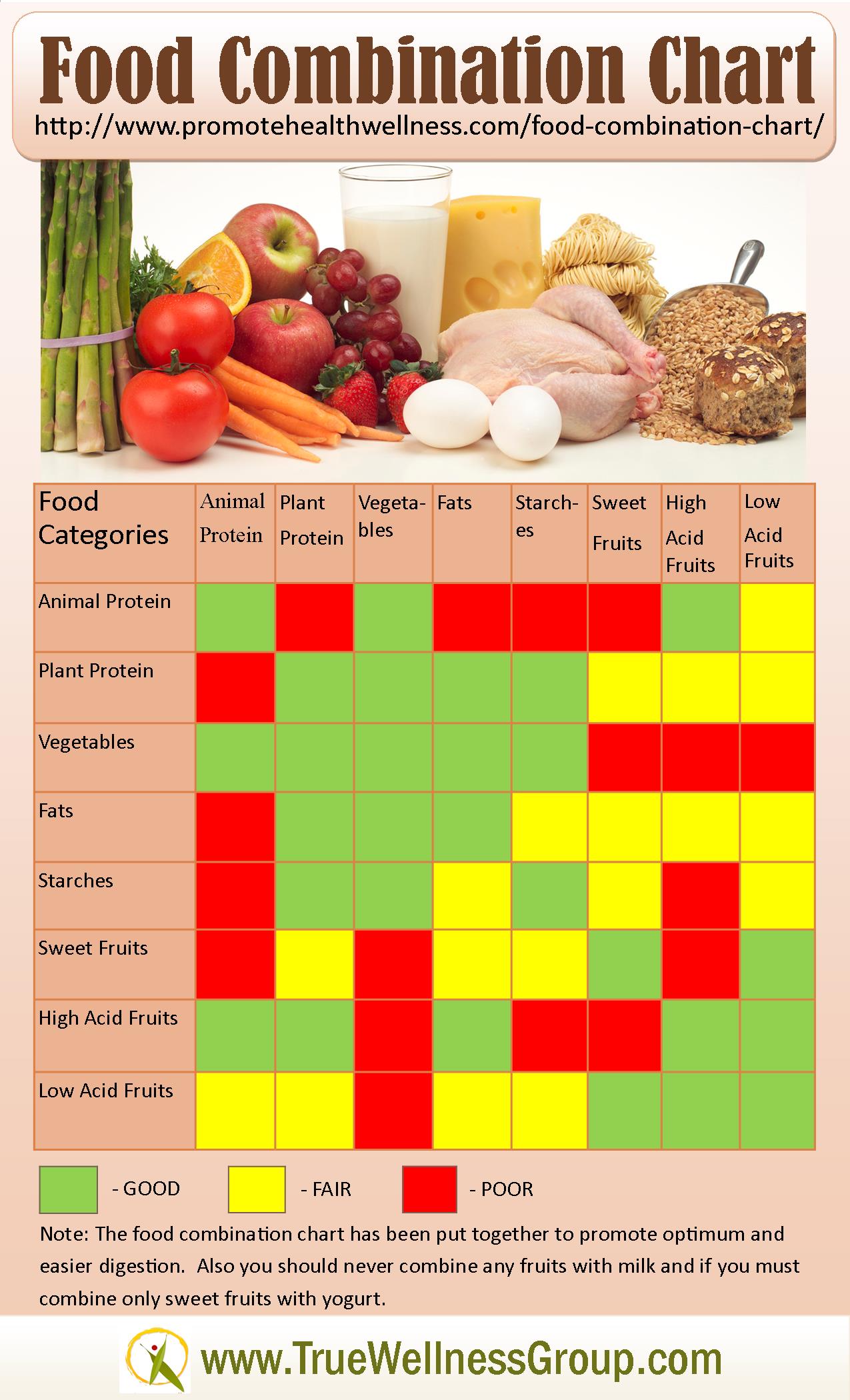Posts Tagged ‘Health Coaching’
Anxiety Natural Remedies and Causes
Anxiety is a reaction to inner unwanted thoughts, emotions, or impulses. Anxiety disorders affect almost 1 in 5 adult individuals that means about 40 million people suffer with some kind of anxiety disorder in United States. Anxiety disorders jeopardize person’s ability to function in personal, social, and professional life. Believe it or not, your diet plays a role in reducing or increasing anxiety. Good news is that there are natural anxiety remedies you can implement in your diet and life style to minimize the affect or completely cure the anxiety disorders. 
Causes
Before implementing anxiety natural remedies, you need to understand the causes of anxiety and remove them from your mind (mental) and body (physical). Mind-body wellness is intricately interwoven. One affects the wellness of the other. Physiology supports psychology and vice-versa.
Mental Causes: Thoughts and emotions are food for your mind. Be careful what you are carrying, you continue to take in, and dwell on. You must have someone trustworthy friend or psychologist to speak with to metabolize your “stuck” thoughts and emotions out of your mind. Read more in Mental Gingivitis article.
Physical Causes: Foods and drinks we take in can contribute to your anxiety. According many studies conducted in the last three decades: 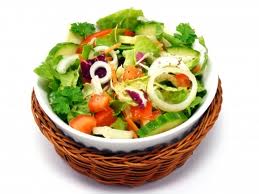
1. Alcohol and substance abuse can mask the anxiety symptoms or make them worse in some individuals
2. Caffeine, well known for causing anxious behavior in people, has anxiogenic effects that can amplify anxiety in some anxiety disorder patients offsetting any alertness benefits of caffeine
3. According to Ayurveda natural medicine, cold, raw, dry, processed, and pungent foods can increase anxiety in the individuals suffering from anxiety disorders. Yes, RAW foods, for some people they can create havoc.
Both physical and mental “foods” we take in affect the anxiety. Though the root cause of the anxiety lies in the mind, the physiology, eating right foods, must support the mind and should not aggravate or contribute to anxiety. First, you must remove the causes for any treatment to work and if you don’t anxiety will increase to panic and fear. If you are looking to use natural remedies for anxiety, then be prepared to treat both the physiology (body) and psychology (mind). Please proceed to next article for anxiety natural remedies.
Read More...
Vitamin D Foods: What’s so Hot About the Sunshine Vitamin?
In the past 5 years or so, we have seen a renewed interest in the sunshine vitamin because new data suggest benefits extending beyond bone health. Possibility of association of vitamin D deficiency has been described with cardiovascular disease, diabetes, cancer, pain, asthma, allergies, depression, multiple sclerosis, and even mortality. These reasons should be enough to convince us to add Vitamin D foods in our diet.
Rickets was first described in the 1600’s, as a disease of rich children (because they were getting less sunlight exposure than the poor). It was characterized by weak bones: bow-legs and bone pain. There is no question about the role of Vitamin D in bone health. Widespread use of cod liver oil and fortification of milk, foods containing vitamin D, led to the virtual disappearance of rickets in North America and Europe by the 1930’s.
Types of Vitamin D
Vitamin D comes in 2 forms: D2 or Ergocalciferol and D3 or Cholecalciferol
D3 is produced in the skin in response to sunlight (UV B radiation) or can be obtained from animal sources in the diet. D2 can only be acquired from a few plant sources.
Vitamin D Food sources: For vitamin D3 deep sea fatty fish, egg yolks, liver
Vitamin D Food sources: For vitamin D2 : rare sources in plants; primarily produced commercially by irradiation of yeast for fortification and supplementation
Foods containing both forms of vitamin D undergo identical metabolism. Both are converted to 25-hydroxyvitamin D in the liver and this 25(OH) D is used to measure vitamin D level in the lab. In the kidney, 25 (OH) D is further hydroxylated to 1, 25 (OH) D, which is biologically active form of vitamin D.
Vitamin D Deficiency and Diseases Research
1, 25 (OH) D has been well known to involve with calcium metabolism and bone health. The association between vitamin D insufficiency, sometimes defined as a level of 25 (OH) D below 30 ng/mL, and cardiovascular disease, diabetes, cancer, pain, asthma, allergies, depression, multiple sclerosis, and mortality is being intensely investigated. The most promising research is a National Institutes of Health funded clinical trial with 20,000 participants which started this year, and will last 5 years. This should help clarify the benefits and risks of vitamin D supplementation in our diet.
Vitamin D Dosage
Until the research results are in, it is perfectly reasonable to find out your vitamin D level. Include foods with vitamin D plus take 1000-2000 units of D3 as a supplement along with your fish oil and low dose Aspirin(if over 45 or as recommended by your doctor) to maintain your health and wellness.
Read More...
Causes and Natural Cure for Hemorrhoids
Hemorrhoids, also known as piles, are a very commonly occurring problem. Hemorrhoids are basically varicose veins. There are simple and natural cure for hemorrhoids which are only effective if you first understand the causes and remove them and second provide direct application of natural oils to the swollen area of rectum, varicose veins, to soothe the pain and subsequently eliminate the swelling.
Types of Hemorrhoids: There are bleeding hemorrhoids and non-bleeding hemorrhoids. The bleeding result from bursting of the varicose veins and it is more come in when the hemorrhoids are in the inside of rectum. You should note the blood color; if it is bright red then it just came out of the busted vein while the stool was passing. The non-bleeding hemorrhoids are typically external varicose veins just outside the rectum and are often more painful when passing the stool. Natural creams and oils can be used to reduce the swelling and promote comfortable passing of the stool.
Typical Causes for Hemorrhoids: The main cause of hemorrhoids problem is chronic constipation which is dry hard stool and difficult to pass. In the beginning one can press hard and pass but over time the rectum’s lining gets thinned, this creates varicose and often inflamed veins in or just outside the rectum. The swollen veins further restrict the passage of stool thus resulting in pain and possible bleeding. Other causes of hemorrhoids are:
- Extended periods of sitting or standing or physically hard work
- Obesity
- Pregnancy
- Mental stress that can lead to rushed and pressured passing of the stool
- Hereditary factor (weak rectum muscle lining)
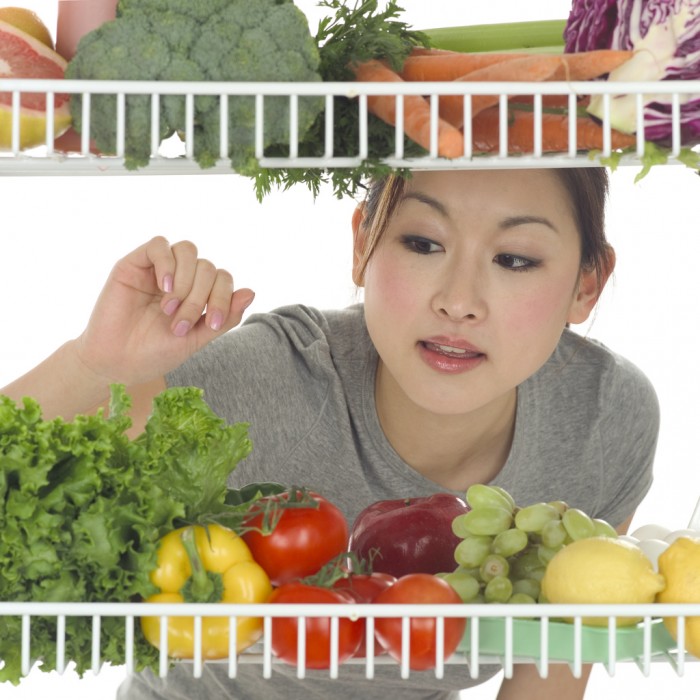 Natural Cure for Hemorrhoids: First and foremost, the cause of constipation in the diet must be removed.
Natural Cure for Hemorrhoids: First and foremost, the cause of constipation in the diet must be removed.
- Note meats, dry, processed food, and cold foods often contribute to hard stool.
- Initially to relieve pressure on the varicose veins, for 5-7 days take fruits and cooked vegetable diet that will form soft stools and that will reduce the size of hemorrhoids.
- You can also take natural stool softeners but do NOT make a regular practice of taking these softeners.
- The best natural method is to take soaked figs in the morning and in the evening for 4 weeks and add boiled beet root to your diet.
- Make sure to drink 8- 10 glasses of water per day.
- Avoid hot spicy foods.
- Take 1000mg of Turmeric after each meal and 1000 mg of Triphala with warm milk before bedtime.
 Second natural cure for hemorrhoids is exercising. Exercising of the abdominal area and muscles is very important to tone the muscles around rectum area. Among others Sarvangasna is probably the best yoga posture for hemorrhoids to drain the blood from varicose veins and release pressure.
Second natural cure for hemorrhoids is exercising. Exercising of the abdominal area and muscles is very important to tone the muscles around rectum area. Among others Sarvangasna is probably the best yoga posture for hemorrhoids to drain the blood from varicose veins and release pressure.
Third, support your cause removing efforts with direct application of hemorrhoids healing natural oil proven to reduce swelling, soothe pain, and eliminate hemorrhoids. Combination of all these methods offer natural cure for hemorrhoids in 4 to 6 weeks and promote health and wellness naturally.
“Woman doing exercise” Image courtesy of AMBRO at FreeDigitalPhotos.net
Read More...
Chemotherapy Diet: Reduce Side Effects During and After
Cancer is an ultimate imbalance of all three energies (Air, Fire, and Earth) in our body. The effect of these imbalanced energies results in irregular formation of cells (cancer). First these cells accumulate to form an unrecognized and non-functional growth, second the growth is “cooked” (cells mature and increase in numbers), and third the irregular cells spread- leave their original location and are carried to other locations in the body. Today the most popular method to destroy these cells is Chemotherapy. Unfortunately, along with destroying cancer cells, it also destroys good cells plus generates excessive toxins and unwanted side effects. So it is important to support the body during chemotherapy with a right chemotherapy diet that would not only assist the body to throw out the toxins, but also would not create additional toxins.
 Ayurveda Cancer Research done in India discovered such a chemotherapy diet that showed very promising results. While flushing the toxins can be accomplished with this diet, but it is not certain exactly how much this diet helps in NOT growing new cancer cells. After the chemotherapy, in some cancer patients the growth stops and in some others it doesn’t. This remains an unknown. But please note here, physical factors are not the only ones influencing the cancer cells growth, there are psychosomatic factors that are unique to each person are also influencing the cancer manifestation.
Ayurveda Cancer Research done in India discovered such a chemotherapy diet that showed very promising results. While flushing the toxins can be accomplished with this diet, but it is not certain exactly how much this diet helps in NOT growing new cancer cells. After the chemotherapy, in some cancer patients the growth stops and in some others it doesn’t. This remains an unknown. But please note here, physical factors are not the only ones influencing the cancer cells growth, there are psychosomatic factors that are unique to each person are also influencing the cancer manifestation.
The chemotherapy diet guidelines provided here are specifically for during and for 4-6 months after the chemotherapy. With some adjustments based on person’s unique condition & mind-body constitution, this diet for chemotherapy can be used as a base for building a new diet which may prevent cancer in future and promote natural health and wellness for many years to come.
Detailed Outline of Chemotherapy Diet During and After
General diet suggestions:
AVOID: Heavy oily, Sugar rich, Ice cold drinks and Junk fried food, Alcohol.
Do Emphasize on warm nourishing very little spice foods, only vegetables – lightly sautéed or steamed. Always consume warm water.
Specific Food Selections:
Grains: Oats, Quinoa, Barley, Basmati Rice (baked, steamed, boiled or roasted)
Vegetables: Bitter Melon, Pumpkin, Snake Gourd, Cabbage, Okra. Above vegetables ALWAYS COOKED (No Raw) mix with radish, and/or carrot, and/or beetroot. Cook with fresh ginger, coriander, black pepper and ghee (use ghee in little amount)
Salads: Radish, beetroot, cabbage, leafy greens, carrot + lemon juice, Rock Salt, & Black pepper.
Legumes: Moong Beans boiled with ginger, cumin, black pepper, rock salt, and ghee. (use ghee in little amount- no more than 1 teaspoon in one meal)
Non Vegetarian Soup only: (Only if you must have non-veg and can digest during chemo, otherwise after chemo) Liver soup, Goat or lamb bone marrow soup
Spices: Rock salt, fresh ginger, coriander, black pepper, garlic, turmeric.
Fruits: Avoid Sweat fruits. Limited on Sour fruits More on Bitter and Astringent tasting fruits like Pomegranate, cranberry, berries, Apples, Apricot, cherries, Dry Fruits-Rasins, Prunes, Figs, Dates
Oils: Sunflower only
Teas: Make grated ginger (1/2 teaspoon) + lemon grass 1 leaf + basil leaves 4-5 + 2 cups water Boil it to half and drink morning and evening
Beverages: ½ whole milk + ½ water + ginger powder, or buttermilk with pinch of ginger powder and salt
Juice everyday: 2 carrots thoroughly scrubbed & washed, cup of apricot juice, ½ teaspoon lime juice, 1 teaspoon fresh grated ginger, and 3 mint leaves
Note: Take all fruits and fruit drinks 30 minutes before the meals or 90 minutes after the meals.
30 days After the Chemotherapy if the appetite is back or wait till appetite returns:
Add 2000mg of Triphala each with lunch and dinner
Note a patient must consult and monitor their situation with their physician and consult with the Ayurvedic practitioner before making diet changes.
Read More...
Kapha Pitta Vata Imbalances; Diseases Related to Kapha and Pitta
In the Ayurveda medical system, health in one word is “balance”. When this balance is tipped, our body starts to suffer and if this suffering continues, it develops into a disease. It is due to imbalance in one or more of the three doshas (energies), “Kapha Pitta Vata”. Here you will discover diseases due to Kapha and Pitta imbalance. Another article covers diseases related to Vata imbalance. To get familiar with “Kapha Pitta Vata” energies and discover what energies make up your constitution, please subscribe below to FREE Ayurveda Basics course.
While majority of the diseases are due to Vata imbalance in the body, Kapha or Pitta imbalance are also responsible for some of the very common diseases. In this article I will focus on the diseases related to when the Kapha energy is imbalanced and diseases related to when the Pitta energy is imbalanced.
Kapha (earth) energy is responsible for stability, structure, storage, and growth. Kapha controls strength, size, rate of growth of the body, and storing information in mind. Typically when Kapha energy is disturbed, the body starts to put on weight (unnecessary growth) by storing more fat, thickening of tissues and blood, and retaining extra body fluids. This leads to unbalancing of the Vata energy as well. As a result, imbalances create compromised and inefficient body’s storage & growth functions leading to a disease. Typical symptoms; body becomes heavy, dull, slow, and stuffy with mucus. Diseases that are related to Kapha Imbalance:
Note the following list is of common diseases but is not all inclusive list:
- Allergies/Mucus
- Asthma
- Colds
- Cholesterol higher levels
- Diabetes
- Edema
- Growth (Unwanted) like tumors
- Obesity
All Kapha related disorders should be addressed with Kapha pacifying diet and lifestyle after consulting with an ayurvedic practitioner. It is quite often when Kapha energy is disturbed, Vata is also disturbed. So the treatment plan has to be designed keeping both energies (doshas) in mind. Next we will see what happens to our health when Pitta is imbalanced.
Pitta (fire) energy is responsible for providing “heat” for processing functions in the body. All metabolic, catabolic, and other processing functions, even information processing in the mind are performed by Pitta. When Pitta (dosha) energy is imbalanced, the main digestive “fire” and even a cellular “fire” could be disturbed. Processing functions like breakdown of food, absorption of nutrients, and metabolizing at cellular level are compromised. This leads to depletion of strength and perhaps even dryness in the body. And dryness can also alter Vata energy balance. Diseases triggered from Pitta imbalance are:
- Diarrhea
- Feverish body
- Headaches
- Heartburn
- Hyper Tension
- Inflammations (internal or external)
- Skin diseases
All Pitta related disorders should be addressed with Pitta pacifying diet and lifestyle.
Depending upon age, gender, family history, and keeping other factors in mind, an ayurvedic practitioner can make the right recommendations for pacifying and detoxifying treatment plans for “Kapha Pitta Vata” imbalances. Keeping your energies (doshas) balanced maintains and promotes health and wellness naturally. So please consult with your ayurvedic practitioner and also with your physician when you start natural treatments along side with any medication you are taking. Subscribe to FREE mini course below to discover your constitution:
“Overweight” Image courtesy of AKARAKINGDOMS at FreeDigitalPhotos.net
Read More...
Vata Pita Kapha Imbalances and Diseases Related to Vata Imbalance
It is a well known fact that when our body goes off balance we land ourselves some sort of complication leading to a disease. In the Ayurveda medical system, it is viewed that one or more out of the three energies, “Vata Pita Kapha”, (also know as Doshas) has gone off balance. This imbalance creates an aggravation in the body which results in a disease. In this article I would briefly like to explain what happens when Vata energy goes off balance. To get familiar with “Vata Pita Kapha” energies and discover what energies make up your constitution, please subscribe below to FREE Ayurveda Basics course.
 Vata (air) energy is responsible for all movements in the body. Vata controls all neuromuscular activities, body functions, and even activities of the mind. All movements must take place like a fine clock-work in the body. Without the movement energy, Pita and Kapha energies are useless; in fact, the body is a dead body. On the other hand, if the movement is blocked, altered, slowed, or sped up, the body systems functions get compromised. So Vata (air) is the most important energy in the body to keep balanced and most often to go off balance. Just as in the nature, it is difficult to predict and manage movement of air. So it is with managing Vata energy and keeping it balanced in our body. It is estimated that 60 to 65% or approximately 2 out 3 diseases are a result of Vata imbalance. Other diseases related to Pita and Kapha imbalance are covered in a separate article.
Vata (air) energy is responsible for all movements in the body. Vata controls all neuromuscular activities, body functions, and even activities of the mind. All movements must take place like a fine clock-work in the body. Without the movement energy, Pita and Kapha energies are useless; in fact, the body is a dead body. On the other hand, if the movement is blocked, altered, slowed, or sped up, the body systems functions get compromised. So Vata (air) is the most important energy in the body to keep balanced and most often to go off balance. Just as in the nature, it is difficult to predict and manage movement of air. So it is with managing Vata energy and keeping it balanced in our body. It is estimated that 60 to 65% or approximately 2 out 3 diseases are a result of Vata imbalance. Other diseases related to Pita and Kapha imbalance are covered in a separate article.
Diseases that are related to Vata Imbalance:
Note the following list is just a sample and not all inclusive. I have chosen the most well known and commonly occurring diseases.
- ALS- Lou Gehrig’s
- Alzheimer
- Amenorrhea- irregular or absence of period
- Arthritis
- Attention Deficit Disorder
- Autism
- Bells’ Palsy
- Carpel Tunnel Syndrome
- Cataract
- Chronic Anxiety Disorder
- Erectile Disorder & Early Ejaculation
- Dysmenorrheal- severe painful menstruation
- Endometriosis
- Fibromyalgia (Chronic Fatigue Syndrome)
- Joint Pains
- Hypothyroidism or Hyperthyroidism
- Multiple Sclerosis
- Ptosis- drooping eyelid
- Parkinson’s
- Ringing in Ears
- Sciatica
 All Vata related disorders should be addressed with Vata pacifying diet and lifestyle. Please note, when Vata is imbalanced Pita and Kapha may also become imbalanced. Depending upon age, gender, family history, and keeping other factors in mind, an ayurvedic practitioner can make right recommendations for pacifying and detoxifying treatment plans. So please consult with your ayurvedic practitioner and also with your physician when you start a natural health and wellness treatment along side with any medication you are taking.
All Vata related disorders should be addressed with Vata pacifying diet and lifestyle. Please note, when Vata is imbalanced Pita and Kapha may also become imbalanced. Depending upon age, gender, family history, and keeping other factors in mind, an ayurvedic practitioner can make right recommendations for pacifying and detoxifying treatment plans. So please consult with your ayurvedic practitioner and also with your physician when you start a natural health and wellness treatment along side with any medication you are taking.
Subscribe below to FREE mini course:
Read More...
Food Combination Chart Provides Healthy & Clean Eating Suggestions
To get most out of our meals, we need to follow certain rules of combining food. There are no secrets but a scientific basis for combining foods that are compatible. It is on this scientific basis and including tips from ayurveda natural medical science, we have created a compatible Food Combination chart. Follow the recommendations on this chart for clean eating and optimum digestion. As a result, absorb the most nutrients from the foods you eat.
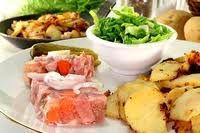 Select foods from the combination chart that are good for eating together. When we mix different food, we are bringing several chemicals together and the digestion itself injects various digestive juices and enzymes (more chemicals) to breakdown the food for proper absorption. Our goal is not only to eat clean but also have a clean digestion. For example, protein and carbohydrates is not a good combination. The digestive process for protein takes on very different route than digesting carbohydrates. The protein requires a lot of acid and longer time in the stomach to breakdown for digestion and during this time acid literally “burns” the nutrients in the carbohydrates. Thus the benefits of the carbohydrates are lost due improper digestion plus the “burned” carbohydrates in the GI tract will create gas.
Select foods from the combination chart that are good for eating together. When we mix different food, we are bringing several chemicals together and the digestion itself injects various digestive juices and enzymes (more chemicals) to breakdown the food for proper absorption. Our goal is not only to eat clean but also have a clean digestion. For example, protein and carbohydrates is not a good combination. The digestive process for protein takes on very different route than digesting carbohydrates. The protein requires a lot of acid and longer time in the stomach to breakdown for digestion and during this time acid literally “burns” the nutrients in the carbohydrates. Thus the benefits of the carbohydrates are lost due improper digestion plus the “burned” carbohydrates in the GI tract will create gas.
The most common food combination that creates indigestion and gas is combination of high rich protein and carbohydrates. For the reasons described earlier, combining meat with potatoes, bread, sweets, and fruits should be avoided particularly. So what do we eat protein foods with? Animal protein foods are best digested when combined with fresh or cooked vegetables and highly acidic fruits. However, the plant protein foods like nuts, beans, and legumes may not be combined with high acidic fruits such as oranges, lemons, and pineapples. Look at the food combination chart below for more details.
Over 80% of the digestive disorders are caused by NOT choosing the right food combination. You will know when you have eaten a wrong combination. Your body will express the signs of discomfort, gurgling sounds, and gas. So a sign of clean eating is when you eat compatible foods that enable a clean efficient digestion without producing discomfort & flatulence after the meal.
Food Categories
- Animal Protein: Meat, Cheese, Eggs, Poultry, Fish
- Plant Protein: Nuts, Seeds, Soya beans, Legumes
- Vegetables: All vegetables like leafy greens, cabbage, cauliflower, broccoli, tomatoes, cucumbers, etc.
- Fats: All Oils, Butter, Margarine
- Starches: Potatoes, Breads, All Grains
- Sweet Fruits: All sweet fruits like Bananas, Cantaloupes, Watermelon, etc.
- High Acid Fruits: All fruits like Oranges, Lemons, Pineapples, etc.
- Sweet Fruits: All sweet fruits like Bananas, Cantaloupes, Watermelon, etc.
- Low Acid Fruits: All remaining fruits like apples, apricots, pears, peaches, etc.
Note: The food combination chart has been put together to promote optimum and easier digestion. Also you should never combine any fruits with milk and if you must combine only sweet fruits with yogurt.
Make the most out of your money and efforts you put on preparing meals while promoting health and wellness.
Read More...
Herbs and Foods for Lower Cholesterol
Previous article “how do you lower cholesterol naturally” covered what is cholesterol, types of cholesterol, and natural way to maintain the level. Diet is one of the ways, and in order for you to lower your cholesterol level, you must make changes to your diet and to your lifestyle. This article will expand on what are the right foods for lower cholesterol. Risks are too great for developing serious health problems like heart disease so as soon as you find out you have a problem with your cholesterol, take the following steps to lower and manage it immediately. And for more expansive researched information, please sign up to our newsletter and receive free Lower Your Cholesterol Naturally e-book.
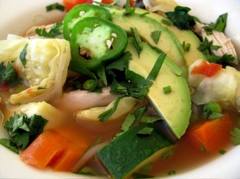 The First Step:
The First Step:
Cut down but do not totally eliminate the amount of cholesterol in your diet. You should also lower the total fat intake, especially on saturated and trans fats, in your diet. Saturated fats are the bigger culprit in raising your cholesterol and these are found in foods like butter, ice cream, eggs, fatty meats, other full-fat dairy products and some oils.
The Second Step:
Eliminate foods with trans fats completely from your diet. The trans fats are especially bad for your cholesterol levels. Trans fats will raise your low-density lipoprotein (LDL), the “bad” cholesterol, and lower high-density lipoprotein (HDL), the “good” cholesterol. Trans fats are mostly found in margarines, cookies, crackers and cakes.
The Third Step:
Incorporate foods for lower cholesterol into your diet. Not all foods raise your cholesterol. Believe it or not there are actually some fatty & oily foods for lowering your cholesterol level. 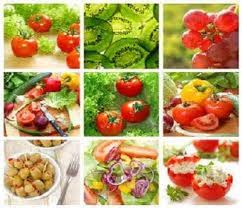 For example, foods like fatty fish, walnuts, oatmeal and oat bran can help to control your cholesterol level. Some studies have shown that a diet which contains these types of foods works as well as some cholesterol-lowering medications to reduce LDL cholesterol levels.
For example, foods like fatty fish, walnuts, oatmeal and oat bran can help to control your cholesterol level. Some studies have shown that a diet which contains these types of foods works as well as some cholesterol-lowering medications to reduce LDL cholesterol levels.
The Fourth Step:
Change your lifestyle to include exercise routine, if do not have one already. Regular exercise or at least being physically active for 30 minutes on most days is a simple way you can change your lifestyle to facilitate to lower your LDL cholesterol and raise your HDL cholesterol. In addition, getting enough physical activity can help you to loose weight. Excess weight has the tendency to increase your LDL (“bad”) cholesterol level. So, if you are overweight and have a high LDL-cholesterol level, losing weight can help you to lower cholesterol. Weight loss also helps to lower triglycerides and raise HDL (“good”) cholesterol levels. And not to mention, being overweight increases your chances for other health problems like diabetes. Poorly controlled diabetes can increases your cholesterol levels as well.
The fifth Step:
Stress is a “brain trash”. Empty it often! Cleanse your mind. Surprisingly, controlling your stress is a way to take control of your cholesterol level. Stress over the long time period has been shown in several studies to raise blood cholesterol levels. Perhaps under stress people make wrong fatty food choices. Use yoga and meditation techniques to release stress and manage your cholesterol level.
Changing lifestyle and choosing foods for lower cholesterol can help you avoid taking cholesterol-lowering medications which has several benefits. One benefit is that it is financially cheaper to eat healthier foods then it is to pay for the medications. Another you do not have to deal with any side effects from these types of medications (See FDA Warnings on Statins). As always natural health tips offer preventive care and promote health and wellness naturally. For more information, sign up and get your free copy of Lower Your Cholesterol Naturally e-book with amazing collection of researched information- all in place. It will save you oodles of time.
Herbal Support:
Cholesterol Protection is an excellent herbal formula to support your efforts in managing cholesterol levels naturally. It is a well balanced formula with Guggulu herb known for its lowering cholesterol properties.
Read More...
How do you Lower Cholesterol Naturally?
With new FDA Statin warnings, I would strongly urge to change to natural ways to manage cholesterol. The U.S. Food and Drug Administration (FDA) has approved important safety label changes for the class of cholesterol-lowering drugs known as Statins (Full FDA Release). Though the cholesterol is well known term but there is still much mystery surrounding it because you hear there is good cholesterol and there is bad. Before getting into how do you lower cholesterol naturally and without using drugs, let us find out what is cholesterol exactly? Cholesterol consists of mostly fat and some protein. It is produced in the liver and other cells in the body and cholesterol is also present in certain foods like meat, eggs, and dairy products.
The question is why does a cholesterol level increase and what are the risks of high cholesterol? 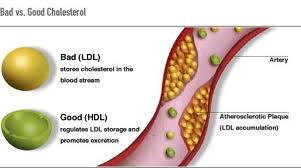 There are two main cholesterol types, LDL and HDL. LDL is known as the bad cholesterol that causes plaque buildup in the arteries and HDL is known as good cholesterol that helps keep the blood free of bad cholesterol.
There are two main cholesterol types, LDL and HDL. LDL is known as the bad cholesterol that causes plaque buildup in the arteries and HDL is known as good cholesterol that helps keep the blood free of bad cholesterol.
Typically, the objective is to lower the LDL and raise the HDL levels of cholesterol. If the LDL level becomes high or the HDL level becomes low, your risk of heart disease increases. One has to maintain this fine balance and try to lower cholesterol without drugs. So now we know what we need to do, let us look at how do you lower cholesterol naturally?
First and foremost to lower cholesterol naturally, remove the main cause- the foods in the diet that increase the cholesterol. Make changes in your diet to eat a low-cholesterol diet. The American Heart Association recommends that you eat less than three hundred milligrams of cholesterol daily. 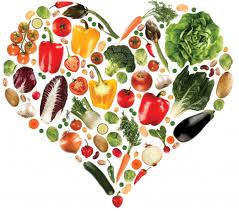 If you already have heart disease, you should limit your daily intake to less than two hundred milligrams a day. You can significantly lower the amount of cholesterol intake by avoiding foods high in saturated fat like meat, dairy, and other animal products. If you smoke, quit smoking. Smoking lowers your good cholesterol levels which can easily be reversed if you quit smoking.
If you already have heart disease, you should limit your daily intake to less than two hundred milligrams a day. You can significantly lower the amount of cholesterol intake by avoiding foods high in saturated fat like meat, dairy, and other animal products. If you smoke, quit smoking. Smoking lowers your good cholesterol levels which can easily be reversed if you quit smoking.
Second, how do you lower cholesterol naturally is by using herbs to slowly “cleanse” the blood of unwanted cholesterol. There are herbal formulas available for lowering cholesterol naturally. One of the most well known herbs for this purpose is Guggulu. Guggulu has a proven track record of lowering LDL by 20% and increasing HDL by 36%. In this matter, one must consult with the Ayurvedic practitioner and their physician before starting a herbal regimen. If you are not familiar with basics of Ayurveda, please check out the FREE mini-course.
Third, how do you lower cholesterol naturally is simply by adding exercising. Exercise increases the good HDL cholesterol in some people. Even a moderate-intensity exercise done routinely can help you to control your weight, diabetes, and high blood pressure which are all risk factors for heart disease. As always Ayurveda natural health tips offer preventive care and promote health and wellness naturally.
So what is the right cholesterol level? There is a cholesterol level guideline that doctors follow but most recent studies show some people with higher level than the guideline are equally healthy and show no heart disease. In reality, the body needs to produce and maintain certain amount of cholesterol for body to perform its functions properly. Cholesterol plays a critical role in the body in production of certain hormones, vitamin D, and the bile acids that help to digest fat. However, when the level increases or decreases beyond what the body requires problems like heart disease can develop.
Our goal is to naturally maintain the right levels of cholesterol without drugs. For more expansive researched information from several sources- now all in one place, please sign-up for our newsletter and receive free Lower Your Cholesterol Naturally e-book.
Read More...
Ten Simple Ayurveda Tips for Life Long Health
“Do We Care Better for Our Cars Than our Bodies?” Strangely enough I really think so. We are concerned more about being stranded on the freeway somewhere than stranding our selves in the hospital with heart attack someday. We do not fill the car with wrong type of gasoline but yet we will fill our own body with wrong types of food. We give our car a break while it is in the garage for regular tune ups. But we do not take a break even while eating meals. And then we wonder in a few years, in spite of eating healthy, how we could land a disease. Today I want to share ten simple Ayurveda Tips to change the lifestyle for better health and avoid chronic illnesses.
You are doing our best to live right to keep your body healthy and avoid illnesses. My goal is to augment your effort by making some suggestions, perhaps add missing links. Following are ten simple Ayurveda tips based on ancient wisdom of natural wellness: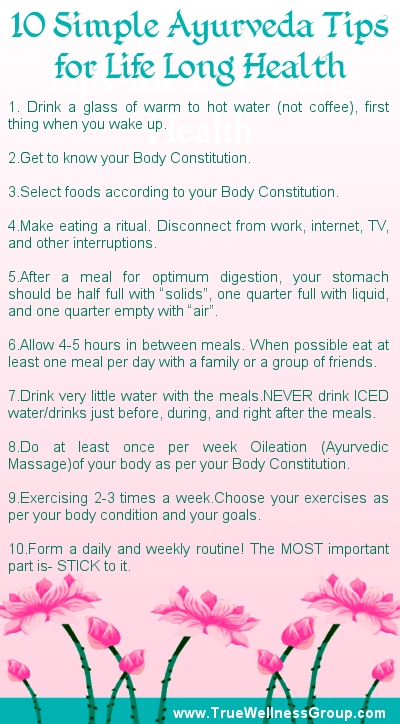
- Drink a glass of warm to hot water (not coffee), first thing when you wake up.
- Get to know your Body Constitution. Each person is uniquely built with physio-psychological constitution. Based on your constitution, certain foods and activities are more suitable for you than others. To assess your body type, please subscribe below to the FREE “simple secrets to good health” mini course and discover your unique body constitution.
- Select foods according to your Body Constitution. Food is the first medicine for the body. Clean eating with right foods help prevent your body from becoming sick in the first place. From an Ayurvedic consultation, receive a personalized Ayurvedic Diet and Lifestyle chart with list of recommended herbs, spices, and foods as per your body constitution .
- Make eating a ritual. Take the time to make it light and relaxed time while offering food with love to your body. Do mindful eating. Connect with your body and mind while enjoying every bite full of tasty flavors and nutrition. Disconnect from work, internet, TV, and other interruptions. Studies have shown when we are distracted with these activities while eating, you gain weight by unknowingly eating more food and/or you absorb less nutrition from your food, even if the food is full of nutrition. Allow your mind to relax and enjoy!
- After a meal for optimum digestion, your stomach should be half full with “solids”, one quarter full with liquid, and one quarter empty with “air”.
- Allow 4-5 hours in between meals. When possible eat at least one meal per day with a family or a group of friends.
- Drink very little water with the meals. Wait about 45 minutes and drink good amount of water. NEVER drink ICED water/drinks just before, during, and right after the meals. Iced water compromises your digestive fire leading to slow or inefficient digestion.
- Do at least once per week Oileation (Ayurvedic Massage)of your body as per your Body Constitution. Ayurvedic Massage is a loving application of oil all over your body with light massaging motions. Leave the oil to soak in for 25 minutes before taking a shower. This nourishes your body while slows down aging. Ayurvedic massage oil is available here.
- Exercising 2-3 times a week. This is nothing new; however, I want to include this for some of us who needs extra motivation and reminders. In my gym, I regularly meet some people who can barely walk but they are there doing their thing. I call them just pure inspiration for the rest of us. Aerobics, sports, walking, yoga, weights, and other resistance exercises are all good. Choose your exercises as per your body condition and your goals.
- Form a daily and weekly routine! The MOST important part is- STICK to it
Imagine Implementing the Small Ayurveda Tips & Receiving Big Health Benefits
Imagine your life if you took care of your body, “your vehicle for your lifetime journey”, with these simple ayurveda tips. You would live with vibrant health; creating meaningful healthy relationships; bursting with energy while undertaking your responsibilities; enjoying life to its full potential; and creating health in others by spreading happiness to every one who surrounds you. You would prevent chronic illnesses like obesity, diabetes, anxiety disorders, depression, and fatal illness like cancer. Economically, you would save loads of money by NOT needing pharmaceutical drugs. And let’s not forget, you would avoid the dangerous side effects that come from using synthetic drugs. Natural Ayurveda tips offer true preventive care and promote health and wellness naturally.
Subscribe below to discover your body type and basic Ayurvedic knowledge in FREE mini course.

